Ahh aging. That all-time nemesis of the twenty-first century. Everywhere you go, people are trying to look younger. We buy all sorts of high-tech anti aging skincare products, try exercise regimes, new workouts, spending hundreds or even thousands on spa treatments, facials and invasive surgical procedures. Just so they can look 5 to 10 years younger. And what is the bottom line? WHY are we all trying to erase the signs of our maturity and experiences? Many blame media or modern culture for putting such a high value on youth and vigor that all other valuable attributes have simply slipped away. Indeed, we see evidence of this all too often – from the workplace that lets their oldest employee go for “budgetary” reasons, to the new dating trend preference of of choosing someone 10 to 20 years your junior.
Maybe it’s the inevitable fear of death that keeps most of us clinging to our years already gone by, but our society looses so much of its value and wisdom by simply paying attention to the surface appearance. Doesn’t it make more sense to take care of yourself as best as you can and age gracefully – without regret or expensive ‘restoration work’?
Of course, most of us would all like to live longer and have a better quality of life. To have the gift of good health in your later years, it makes sense to take care of yourself in your youth. Here are some common-sense lifestyle tips and natural remedies to help grow old youthfully.
Drink More Water
Water makes up approximately 60% of the human body, and there is water in every cell of the body. We cannot survive without water for longer than a few days. With age our sense of thirst gradually diminishes, and the water content of body decreases so many elderly people are somewhat dehydrated. Dehydration is linked to allergies, hypertension, general aches and pains and of course, bad digestion.
Use Organic or Natural Skincare Products
Natural skin care goes beyond the application of products on one’s skin. It also pertains to a holistic philosophy surrounding the care of one’s body. This includes the belief that what is ingested will affect all aspects of health, including the health of skin. People who use natural skin care products are less concerned with artificial beauty enhancements, as they feel that natural beauty is healthy beauty.
Some examples of natural skin care ingredients include jojoba, safflower oil, rose hip seed oil, shea butter, beeswax, witch hazel, aloe vera, tea tree oil, and chamomile. Many of these natural ingredient combinations can be tailored specifically to the individual’s skin type or skin condition.
Eat Healthily
Easier said than done for some, but a healthy diet is essential to your well-being. The old saying “You are what you eat” rings true when we see the rise in dietary related diseases. Don’t be caught digging your grave with your teeth. A balanced diet of fresh, whole (non-processed), organic and preferably raw food should be a large part of your diet.
Basic Guidelines For A Simplified Balanced Diet
* Avoid white flour products
* Eat whole grains such as brown rice, quinoa, millet etc.
* Avoid sugar – rather use honey, agave, xylitol or stevia.
* Eat a variety of legumes (beans, lentils etc.)
* Avoid all hydrogenated fats (margarine etc.)
* Avoid fried foods
* Include low-starch vegetables preferably eaten raw.
* Include foods rich in omega-3 fats.
* Include low-fat, organic protein sources (fish, spirulina, organic whey protein, quinoa)
* Include fresh organic fruit (especially from the super food range) and raw nuts.
* Avoid colourants, flavourants, preservatives and artificial sweeteners.
Whole foods are better than processed. Refined foods result in both a measurable loss of nutrients and an unbalanced food, which creates imbalance in the body when eaten. Living food (such as fresh fruit and vegetables) are more nutritious and better than “dead food” (such as canned foods). Foods grown in “live soil” (organic food) is better than food grown in “sterile soil”. This has largely depleted trace minerals in foods.
How Does Eating Sugar Make You Old?
Eating sugar causes your body to secrete high levels of insulin. Insulin and the stress hormone, cortisol, are two hormones that can dramatically speed up the aging process. Sugar depresses the immune system; it contributes to atherosclerosis, and it causes oxidative stress by creating AGEs (advanced glycosylated end-products). These accumulate in body tissues such as the skin (causing age spots), arteries, kidneys and brain. In other words, eating sugar makes you old.
Do Exercise
Exercise is one of your key weapons in the fight against premature aging. Medical studies prove time and time again that physical exercise is a key factor in the
prevention of chronic disease as well as beneficial for mental function. The main benefit of exercise is the increased oxygen to the brain, heart and other organs which in turn increases their well-being and functioning. Bouncing on a mini-trampoline is a well recommended form of exercise that can be done in the comfort of your own home and at a time that suits your schedule.
Detox
The body detoxifies itself naturally through the skin and other organs of elimination. Assist your body with its cleansing ability by making some lifestyle changes. You need to minimize your exposure to external toxins: changes like drinking pure water, eating organic food, avoiding sources of air pollution and exposure to tobacco, and limiting consumption of alcohol, preservatives, caffeine, sugar and processed foods.
Simple measures like bathing daily, dry brushing, exercising, keeping hydrated, supplementing with herbal remedies that support the organs (like milk thistle for the liver), deep breathing and eating healthily are good routines to follow.
Get Some Sunshine
Natural Vitamin D is another key weapon in the pursuit of good health and longevity. Sunlight is the best form of Vitamin D and its levels in the body affects the entire body. Modern science is now realizing that vitamin D does more than just aid the absorption of calcium and bone formation. It is also involved in multiple repair and maintenance functions, touches hundreds of different genes, and helps to fight infection by regulating the immune system. Vitamin D deficiency is a growing epidemic across the world and contributes to many chronic debilitating diseases such as hypertension, diabetes, osteoporosis, cancer, inflammatory bowel disease and depression, as well as cognitive impairment in older people. Avoid synthetic Vitamin D2 in supplements like fortified foods as high doses have been found to be toxic.
Get More Sleep
Good quality sleep is essential, in fact some say that it’s the best anti-aging tool. While we sleep,the body “recharges” and repairs. The 24-hour circadian rhythm is our internal clock and governs the body’s functions.. This clock helps the body to adapt to the time of day and to environmental changes. Studies have shown a co-dependency between the circadian clock and the body’s metabolism and cellular performance. Disrupted sleep patterns can adversely affect health especially mental health. Some effects include short-term memory loss and impaired creativity as well as weight gain or loss and an increased risk of diabetes and heart disease. Lack of sleep weakens the immune system and may cause decreased production of melatonin, which is produced by the brain during sleep.
Take pleasure in living healthily and make good choices in nutrition, exercise, weight management, mental attitude, work and relationships. This will stand you in good stead for your later years.
References:
1. Science Daily March 19, 2009: How Your Body Clock Regulates Your Metabolism.
2.http://articles.mercola.com/sites/a…
3.http://www.topantiagingtips.com/sle…
4. Bland JS. Improving Genetic Expression in the Prevention of the Disease of Aging – A Functional Medicine Approach to Anti-aging Medicine. Gig Harbour, WA:
HealthComm Intl, 1998
5. Grossman T. The Baby Boomer’s Guide to Living Forever. Golden, CO: Hubristic Press, 2000:127

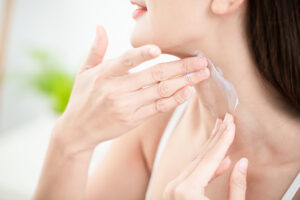





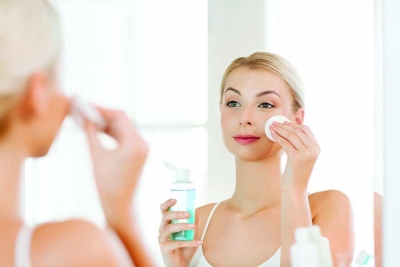
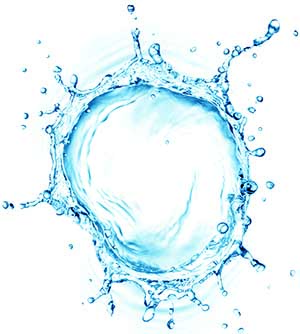
 Rachelle Dupree has over 20 years of experience in marketing, media, and communications. She earned a bachelor’s degree in communication arts and marketing and a second degree in graphic design. She studied with a Denver-based herbalist and naturopath for four years, combining her marketing knowledge with her love of natural remedies. She currently contracts as a marketing and communications director for Vivoderm Natural Skincare and various design clients.
Rachelle Dupree has over 20 years of experience in marketing, media, and communications. She earned a bachelor’s degree in communication arts and marketing and a second degree in graphic design. She studied with a Denver-based herbalist and naturopath for four years, combining her marketing knowledge with her love of natural remedies. She currently contracts as a marketing and communications director for Vivoderm Natural Skincare and various design clients.
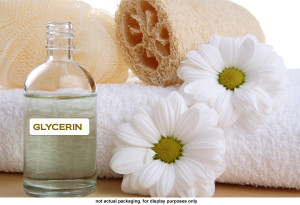 Popularly referred as glycerol, glycerin is an odorless, sweet tasting liquid which is utilized in different beauty and cosmetic products. It is highly popular because of the different advantages that it can offer for natural skin care. It is obtained from a mix of fat that is obtained from water and vegetable oil.
Popularly referred as glycerol, glycerin is an odorless, sweet tasting liquid which is utilized in different beauty and cosmetic products. It is highly popular because of the different advantages that it can offer for natural skin care. It is obtained from a mix of fat that is obtained from water and vegetable oil.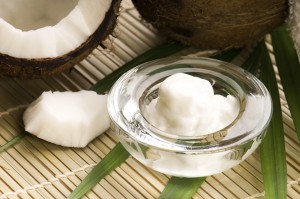


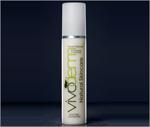
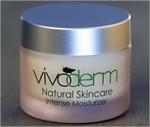
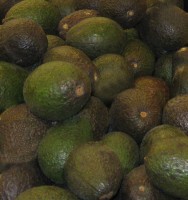
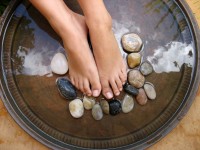



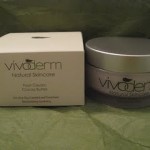


 A contributing factor to dry, flaky, skin in winter is a drop in temperature. Although winter sometimes feels damp, there is usually less water in the air than on your skin and that creates a moisture vapour loss from the skin. As skin becomes drier, its surface layer stops producing the natural lipids which prevent moisture loss, and water cannot be retained so easily. Dry skin will also show wrinkles more easlit and contribute to an aging appearance.
A contributing factor to dry, flaky, skin in winter is a drop in temperature. Although winter sometimes feels damp, there is usually less water in the air than on your skin and that creates a moisture vapour loss from the skin. As skin becomes drier, its surface layer stops producing the natural lipids which prevent moisture loss, and water cannot be retained so easily. Dry skin will also show wrinkles more easlit and contribute to an aging appearance. 1 – melanocyte
1 – melanocyte